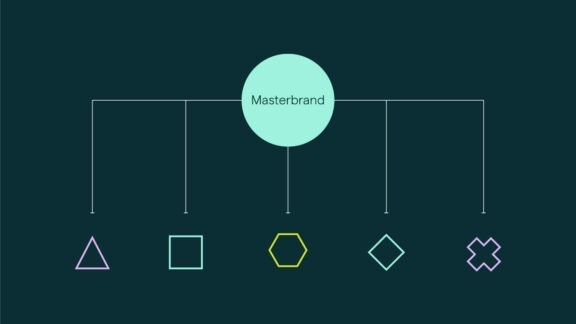In the ever-evolving world of business, where brands must navigate complex markets and diverse customer needs, the importance of a well-structured brand architecture cannot be overstated. Whether you’re managing a single brand or a portfolio of sub-brands, the way your brand is structured can significantly impact its success.
Brand architecture is more than just an organisational tool—it’s a strategic framework that defines how your brand and its sub-brands relate to each other, how they interact with customers, and how they present themselves to the world. Let’s explore why a well-designed brand architecture is essential for businesses looking to grow, innovate, and stand out in today’s competitive marketplace.
What is brand architecture?
At its core, brand architecture refers to the hierarchical structure of a brand and its sub-brands. It’s the blueprint that guides how your brands are organised, how they communicate, and how they coexist. There are various types of brand architecture, including:
- Monolithic (branded house): Where the parent brand is the dominant name, and all sub-brands fall under its umbrella (e.g., FedEx).
- Endorsed: Where sub-brands have their own identity but are endorsed by the parent brand (e.g., Nestlé’s KitKat).
- Pluralistic (House of brands): Where the parent brand is not visible, and sub-brands operate independently (e.g. Procter & Gamble’s Tide, Gillette).
Choosing the right structure depends on your business goals, target audience, and the unique value each brand offers.
Why brand architecture matters
A well-thought-out brand architecture offers several benefits that are crucial for long-term success:
- Clarity and focus: Brand architecture provides clarity by clearly defining the roles and relationships between your parent brand and sub-brands. This clarity helps both internal teams and customers understand the purpose of each brand, reducing confusion and ensuring that your marketing efforts are focused and aligned.
- Efficient resource allocation: With a clear brand structure, you can allocate resources more efficiently, ensuring that your investment in marketing, branding, and product development is optimised across the brand portfolio. This efficiency not only saves time and money but also maximises the impact of your branding efforts.
- Scalability and flexibility: A strong brand architecture allows your business to scale and adapt to changes in the market. Whether you’re launching new products, entering new markets, or acquiring new brands, a well-designed brand architecture provides the flexibility to integrate these changes seamlessly.
- Brand equity: Consistency across your brand portfolio strengthens brand equity. By maintaining a cohesive brand identity and message, you reinforce the trust and loyalty of your customers, enhancing the overall value of your brand.
- Risk management: In today’s fast-paced digital world, brand reputation can change in an instant. Brand architecture helps mitigate risks by isolating potential issues within a specific sub-brand, protecting the overall brand portfolio from widespread damage.
Creating a brand architecture that works
Designing an effective brand architecture requires a deep understanding of your business objectives, market positioning, and customer needs. Here’s how we approach this at Studio North:
- Discovery phase: We start by conducting a comprehensive audit of your existing brand structure, market landscape, and competitor strategies. This helps us identify opportunities and challenges unique to your business.
- Strategic planning: Based on our findings, we work with you to define the optimal brand architecture that aligns with your business goals. This may involve deciding on a branded house, house of brands, or an endorsed brand strategy, depending on what best suits your needs.
- Implementation: Once the strategy is defined, we help you implement it across your brand portfolio. This includes refining brand identities, messaging, and visual elements to ensure consistency and cohesion across all touchpoints.
- Ongoing evaluation: Brand architecture is not static—it needs to evolve as your business grows and market conditions change. We provide ongoing support to help you adapt your brand structure to meet new challenges and opportunities.
The impact of a well-structured brand architecture
When done right, brand architecture becomes a powerful tool that drives growth, fosters innovation, and strengthens your competitive edge. It allows you to build a brand ecosystem where each sub-brand contributes to the overall success of the business, creating value for both your company and your customers.
A well-designed brand architecture is more than just a structure—it’s a strategy for success. It enables your brand to thrive in a complex and dynamic market, ensuring that your brand not only meets the needs of today but is also prepared for the opportunities of tomorrow.
The blueprint for brand success
At Studio North, we understand the importance of building a solid foundation for your brand. Our approach to brand architecture is about more than just organising brands—it’s about creating a strategic framework that drives business success.
Whether you’re looking to streamline your existing brand portfolio or expand into new markets, we’re here to help you design a brand architecture that supports your goals and strengthens your brand’s impact.








